[English] 日本語
 Yorodumi
Yorodumi- EMDB-32718: Local CryoEM structure of the SARS-CoV-2 S6P(B.1.1.529) in comple... -
+ Open data
Open data
- Basic information
Basic information
| Entry |  | |||||||||
|---|---|---|---|---|---|---|---|---|---|---|
| Title | Local CryoEM structure of the SARS-CoV-2 S6P(B.1.1.529) in complex with BD55-3152 Fab | |||||||||
 Map data Map data | ||||||||||
 Sample Sample |
| |||||||||
 Keywords Keywords | antibody / complex / S6P / VIRAL PROTEIN | |||||||||
| Function / homology |  Function and homology information Function and homology informationMaturation of spike protein / viral translation / Translation of Structural Proteins / Virion Assembly and Release / host cell surface / host extracellular space / suppression by virus of host tetherin activity / Induction of Cell-Cell Fusion / structural constituent of virion / entry receptor-mediated virion attachment to host cell ...Maturation of spike protein / viral translation / Translation of Structural Proteins / Virion Assembly and Release / host cell surface / host extracellular space / suppression by virus of host tetherin activity / Induction of Cell-Cell Fusion / structural constituent of virion / entry receptor-mediated virion attachment to host cell / host cell endoplasmic reticulum-Golgi intermediate compartment membrane / membrane fusion / receptor-mediated endocytosis of virus by host cell / Attachment and Entry / positive regulation of viral entry into host cell / receptor-mediated virion attachment to host cell / receptor ligand activity / host cell surface receptor binding / symbiont-mediated suppression of host innate immune response / fusion of virus membrane with host plasma membrane / fusion of virus membrane with host endosome membrane / viral envelope / virion attachment to host cell / SARS-CoV-2 activates/modulates innate and adaptive immune responses / host cell plasma membrane / virion membrane / identical protein binding / membrane / plasma membrane Similarity search - Function | |||||||||
| Biological species |  Homo sapiens (human) / Homo sapiens (human) /  | |||||||||
| Method | single particle reconstruction / cryo EM / Resolution: 3.5 Å | |||||||||
 Authors Authors | Du S / Xiao JY | |||||||||
| Funding support | 1 items
| |||||||||
 Citation Citation |  Journal: Nature / Year: 2022 Journal: Nature / Year: 2022Title: BA.2.12.1, BA.4 and BA.5 escape antibodies elicited by Omicron infection. Authors: Yunlong Cao / Ayijiang Yisimayi / Fanchong Jian / Weiliang Song / Tianhe Xiao / Lei Wang / Shuo Du / Jing Wang / Qianqian Li / Xiaosu Chen / Yuanling Yu / Peng Wang / Zhiying Zhang / Pulan ...Authors: Yunlong Cao / Ayijiang Yisimayi / Fanchong Jian / Weiliang Song / Tianhe Xiao / Lei Wang / Shuo Du / Jing Wang / Qianqian Li / Xiaosu Chen / Yuanling Yu / Peng Wang / Zhiying Zhang / Pulan Liu / Ran An / Xiaohua Hao / Yao Wang / Jing Wang / Rui Feng / Haiyan Sun / Lijuan Zhao / Wen Zhang / Dong Zhao / Jiang Zheng / Lingling Yu / Can Li / Na Zhang / Rui Wang / Xiao Niu / Sijie Yang / Xuetao Song / Yangyang Chai / Ye Hu / Yansong Shi / Linlin Zheng / Zhiqiang Li / Qingqing Gu / Fei Shao / Weijin Huang / Ronghua Jin / Zhongyang Shen / Youchun Wang / Xiangxi Wang / Junyu Xiao / Xiaoliang Sunney Xie /  Abstract: Severe acute respiratory syndrome coronavirus 2 (SARS-CoV-2) Omicron sublineages BA.2.12.1, BA.4 and BA.5 exhibit higher transmissibility than the BA.2 lineage. The receptor binding and immune- ...Severe acute respiratory syndrome coronavirus 2 (SARS-CoV-2) Omicron sublineages BA.2.12.1, BA.4 and BA.5 exhibit higher transmissibility than the BA.2 lineage. The receptor binding and immune-evasion capability of these recently emerged variants require immediate investigation. Here, coupled with structural comparisons of the spike proteins, we show that BA.2.12.1, BA.4 and BA.5 (BA.4 and BA.5 are hereafter referred collectively to as BA.4/BA.5) exhibit similar binding affinities to BA.2 for the angiotensin-converting enzyme 2 (ACE2) receptor. Of note, BA.2.12.1 and BA.4/BA.5 display increased evasion of neutralizing antibodies compared with BA.2 against plasma from triple-vaccinated individuals or from individuals who developed a BA.1 infection after vaccination. To delineate the underlying antibody-evasion mechanism, we determined the escape mutation profiles, epitope distribution and Omicron-neutralization efficiency of 1,640 neutralizing antibodies directed against the receptor-binding domain of the viral spike protein, including 614 antibodies isolated from people who had recovered from BA.1 infection. BA.1 infection after vaccination predominantly recalls humoral immune memory directed against ancestral (hereafter referred to as wild-type (WT)) SARS-CoV-2 spike protein. The resulting elicited antibodies could neutralize both WT SARS-CoV-2 and BA.1 and are enriched on epitopes on spike that do not bind ACE2. However, most of these cross-reactive neutralizing antibodies are evaded by spike mutants L452Q, L452R and F486V. BA.1 infection can also induce new clones of BA.1-specific antibodies that potently neutralize BA.1. Nevertheless, these neutralizing antibodies are largely evaded by BA.2 and BA.4/BA.5 owing to D405N and F486V mutations, and react weakly to pre-Omicron variants, exhibiting narrow neutralization breadths. The therapeutic neutralizing antibodies bebtelovimab and cilgavimab can effectively neutralize BA.2.12.1 and BA.4/BA.5, whereas the S371F, D405N and R408S mutations undermine most broadly sarbecovirus-neutralizing antibodies. Together, our results indicate that Omicron may evolve mutations to evade the humoral immunity elicited by BA.1 infection, suggesting that BA.1-derived vaccine boosters may not achieve broad-spectrum protection against new Omicron variants. | |||||||||
| History |
|
- Structure visualization
Structure visualization
| Supplemental images |
|---|
- Downloads & links
Downloads & links
-EMDB archive
| Map data |  emd_32718.map.gz emd_32718.map.gz | 168.2 MB |  EMDB map data format EMDB map data format | |
|---|---|---|---|---|
| Header (meta data) |  emd-32718-v30.xml emd-32718-v30.xml emd-32718.xml emd-32718.xml | 13.2 KB 13.2 KB | Display Display |  EMDB header EMDB header |
| Images |  emd_32718.png emd_32718.png | 57.8 KB | ||
| Filedesc metadata |  emd-32718.cif.gz emd-32718.cif.gz | 5.8 KB | ||
| Archive directory |  http://ftp.pdbj.org/pub/emdb/structures/EMD-32718 http://ftp.pdbj.org/pub/emdb/structures/EMD-32718 ftp://ftp.pdbj.org/pub/emdb/structures/EMD-32718 ftp://ftp.pdbj.org/pub/emdb/structures/EMD-32718 | HTTPS FTP |
-Validation report
| Summary document |  emd_32718_validation.pdf.gz emd_32718_validation.pdf.gz | 477.9 KB | Display |  EMDB validaton report EMDB validaton report |
|---|---|---|---|---|
| Full document |  emd_32718_full_validation.pdf.gz emd_32718_full_validation.pdf.gz | 477.5 KB | Display | |
| Data in XML |  emd_32718_validation.xml.gz emd_32718_validation.xml.gz | 6.8 KB | Display | |
| Data in CIF |  emd_32718_validation.cif.gz emd_32718_validation.cif.gz | 7.8 KB | Display | |
| Arichive directory |  https://ftp.pdbj.org/pub/emdb/validation_reports/EMD-32718 https://ftp.pdbj.org/pub/emdb/validation_reports/EMD-32718 ftp://ftp.pdbj.org/pub/emdb/validation_reports/EMD-32718 ftp://ftp.pdbj.org/pub/emdb/validation_reports/EMD-32718 | HTTPS FTP |
-Related structure data
| Related structure data | 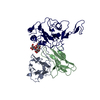 7wr8MC 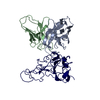 7wrlC 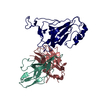 7wroC 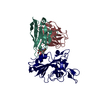 7wrzC  7x6aC  7xiwC 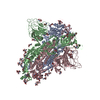 7xixC 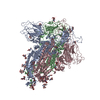 7xiyC 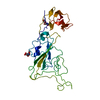 7xizC  7xnqC  7xnrC  7xnsC M: atomic model generated by this map C: citing same article ( |
|---|---|
| Similar structure data | Similarity search - Function & homology  F&H Search F&H Search |
- Links
Links
| EMDB pages |  EMDB (EBI/PDBe) / EMDB (EBI/PDBe) /  EMDataResource EMDataResource |
|---|---|
| Related items in Molecule of the Month |
- Map
Map
| File |  Download / File: emd_32718.map.gz / Format: CCP4 / Size: 178 MB / Type: IMAGE STORED AS FLOATING POINT NUMBER (4 BYTES) Download / File: emd_32718.map.gz / Format: CCP4 / Size: 178 MB / Type: IMAGE STORED AS FLOATING POINT NUMBER (4 BYTES) | ||||||||||||||||||||||||||||||||||||
|---|---|---|---|---|---|---|---|---|---|---|---|---|---|---|---|---|---|---|---|---|---|---|---|---|---|---|---|---|---|---|---|---|---|---|---|---|---|
| Projections & slices | Image control
Images are generated by Spider. | ||||||||||||||||||||||||||||||||||||
| Voxel size | X=Y=Z: 1.04 Å | ||||||||||||||||||||||||||||||||||||
| Density |
| ||||||||||||||||||||||||||||||||||||
| Symmetry | Space group: 1 | ||||||||||||||||||||||||||||||||||||
| Details | EMDB XML:
|
-Supplemental data
- Sample components
Sample components
-Entire : complex of BD55-3152 with S6P
| Entire | Name: complex of BD55-3152 with S6P |
|---|---|
| Components |
|
-Supramolecule #1: complex of BD55-3152 with S6P
| Supramolecule | Name: complex of BD55-3152 with S6P / type: complex / ID: 1 / Parent: 0 / Macromolecule list: all |
|---|---|
| Source (natural) | Organism:  Homo sapiens (human) Homo sapiens (human) |
-Macromolecule #1: Spike protein S1
| Macromolecule | Name: Spike protein S1 / type: protein_or_peptide / ID: 1 / Number of copies: 1 / Enantiomer: LEVO |
|---|---|
| Source (natural) | Organism:  |
| Molecular weight | Theoretical: 21.968818 KDa |
| Recombinant expression | Organism:  Homo sapiens (human) Homo sapiens (human) |
| Sequence | String: NLCPFDEVFN ATRFASVYAW NRKRISNCVA DYSVLYNLAP FFTFKCYGVS PTKLNDLCFT NVYADSFVIR GDEVRQIAPG QTGNIADYN YKLPDDFTGC VIAWNSNKLD SKVSGNYNYL YRLFRKSNLK PFERDISTEI YQAGNKPCNG VAGFNCYFPL R SYSFRPTY ...String: NLCPFDEVFN ATRFASVYAW NRKRISNCVA DYSVLYNLAP FFTFKCYGVS PTKLNDLCFT NVYADSFVIR GDEVRQIAPG QTGNIADYN YKLPDDFTGC VIAWNSNKLD SKVSGNYNYL YRLFRKSNLK PFERDISTEI YQAGNKPCNG VAGFNCYFPL R SYSFRPTY GVGHQPYRVV VLSFELLHAP ATVCG UniProtKB: Spike glycoprotein |
-Macromolecule #2: BD55-3152H
| Macromolecule | Name: BD55-3152H / type: protein_or_peptide / ID: 2 / Number of copies: 1 / Enantiomer: LEVO |
|---|---|
| Source (natural) | Organism:  Homo sapiens (human) Homo sapiens (human) |
| Molecular weight | Theoretical: 27.819539 KDa |
| Recombinant expression | Organism:  Homo sapiens (human) Homo sapiens (human) |
| Sequence | String: MGWSLILLFL VAVATRVLSQ VQLVQSGAEV KKPGASVIVS CKASGYRFIS HYIHWVRQAP GQGLEWMGKI DPSGRGTTYA QKLQGRVSV TRDTSTSSVY MALSGLRSDD TAVYYCARDR FPLSDPYVWG SPLGGLDVWG QGTTVIVSSA STKGPSVFPL A PSSKSTSG ...String: MGWSLILLFL VAVATRVLSQ VQLVQSGAEV KKPGASVIVS CKASGYRFIS HYIHWVRQAP GQGLEWMGKI DPSGRGTTYA QKLQGRVSV TRDTSTSSVY MALSGLRSDD TAVYYCARDR FPLSDPYVWG SPLGGLDVWG QGTTVIVSSA STKGPSVFPL A PSSKSTSG GTAALGCLVK DYFPEPVTVS WNSGALTSGV HTFPAVLQSS GLYSLSSVVT VPSSSLGTQT YICNVNHKPS NT KVDKKVE PKSCDKTHHH HHH |
-Macromolecule #3: BD55-3152L
| Macromolecule | Name: BD55-3152L / type: protein_or_peptide / ID: 3 / Number of copies: 1 / Enantiomer: LEVO |
|---|---|
| Source (natural) | Organism:  Homo sapiens (human) Homo sapiens (human) |
| Molecular weight | Theoretical: 24.830543 KDa |
| Recombinant expression | Organism:  Homo sapiens (human) Homo sapiens (human) |
| Sequence | String: MGWSCIILFL VATATGVHSS YDLTQPPSVS VSPGQTARIT CSGDALPSQY VYWYQQRPGQ APVLVMYKDS ERPPGIPERF SGSTSGTTA TLTITGVQAE DEADYYCQSA DASTTYHVFG GGTKVTVVGQ PKAAPSVTLF PPSSEELQAN KATLVCLISD F YPGAVTVA ...String: MGWSCIILFL VATATGVHSS YDLTQPPSVS VSPGQTARIT CSGDALPSQY VYWYQQRPGQ APVLVMYKDS ERPPGIPERF SGSTSGTTA TLTITGVQAE DEADYYCQSA DASTTYHVFG GGTKVTVVGQ PKAAPSVTLF PPSSEELQAN KATLVCLISD F YPGAVTVA WKADSSPVKA GVETTTPSKQ SNNKYAASSY LSLTPEQWKS HRSYSCQVTH EGSTVEKTVA PTECS |
-Experimental details
-Structure determination
| Method | cryo EM |
|---|---|
 Processing Processing | single particle reconstruction |
| Aggregation state | particle |
- Sample preparation
Sample preparation
| Buffer | pH: 7.2 |
|---|---|
| Vitrification | Cryogen name: ETHANE |
- Electron microscopy
Electron microscopy
| Microscope | FEI TITAN KRIOS |
|---|---|
| Image recording | Film or detector model: GATAN K2 QUANTUM (4k x 4k) / Average electron dose: 50.0 e/Å2 |
| Electron beam | Acceleration voltage: 300 kV / Electron source:  FIELD EMISSION GUN FIELD EMISSION GUN |
| Electron optics | Illumination mode: FLOOD BEAM / Imaging mode: DARK FIELD / Nominal defocus max: 1.5 µm / Nominal defocus min: 1.0 µm |
| Experimental equipment |  Model: Titan Krios / Image courtesy: FEI Company |
- Image processing
Image processing
| Startup model | Type of model: OTHER |
|---|---|
| Final reconstruction | Resolution.type: BY AUTHOR / Resolution: 3.5 Å / Resolution method: FSC 0.143 CUT-OFF / Number images used: 282833 |
| Initial angle assignment | Type: MAXIMUM LIKELIHOOD |
| Final angle assignment | Type: MAXIMUM LIKELIHOOD |
 Movie
Movie Controller
Controller


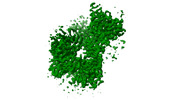















 Z (Sec.)
Z (Sec.) Y (Row.)
Y (Row.) X (Col.)
X (Col.)




















